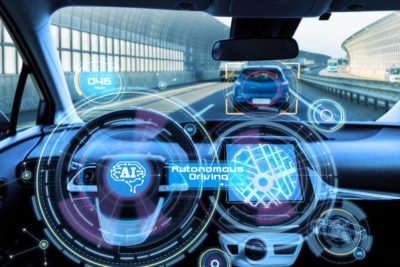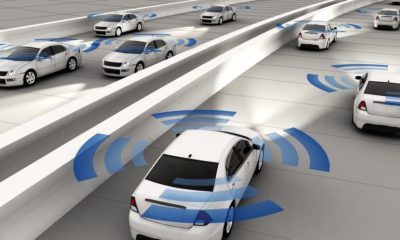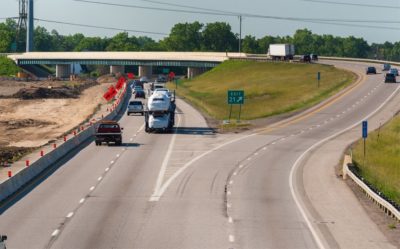
Cars can’t fly, but some cars may soon be of the self-driving type. And, one state, Nevada, may soon allow the first of the self-driving cars to take to the roads if Google has its way. The state of Nevada, the nearest state to Google’s California headquarters is actually a healthy choice, due to the state’s spacious streets and much lower population density.
Google’s Plans
The Internet leader has its hands in many baskets, which has one where self-driving vehicles aren’t only being tested but successfully used for the daily commute. Thus far, an expert driver has always been in the driver’s seat of these cars, but Google is encouraging Nevada to become the first ever state in America to permit driverless cars. If Google’s request to state lawmakers is favorably received and the governor approves, then so-called independent vehicles may start to roll out.
Driverless vehicles sound really scary to some people; however, these cars are particularly armed to drive without someone in the driver’s seat. Google and some other companies have been focusing on this technology which, if used wisely, would make it possible for people to do their other tasks while their cars head down the road. This might possibly prove beneficial for the car owner who ought to drive long miles at night and would rather get some shut-eye instead of striving to stay alert all night.
So, should you forget about the hotel room and set your vehicle to travel the next 7 or 8 hours on a full tank of fuel? No, your car will not be able to refill at the gas station while you are asleep, but it will help you get some sleep while moving you down the road.
Sensing Unit

Autonomous vehicles work by utilizing laser range finders, sensors, and cameras. This project is in collaboration with artificial intelligence scientists at Stanford University, which is also located near Google headquarters. Robotic cars have the capacity to prevent deaths due to road accidents while improving fuel efficiency. That, and also a car-sharing system, would reduce the number of vehicles on America’s streets, possibly by one-half. Under one case, there’s a chance you’re able to call for a car rental to come to your house — driverless, obviously — and take you where you want to go.
In accordance with the New York Times, Google has tested autonomous cars for more than 160,000 miles on jampacked California roads. Most of these cars were not without a driver present, rather the driver sat in the driver’s seat and let the car do the driving itself. Another person has always sat right in the front passenger seat, taking records and monitoring the drive.
Nevada’s Decision
The state of Nevada took up Google’s proposal. Google has used the services of a lobbyist to help make the case to Nevada’s legislator who’ll have to go through the probability of setting precedent and to make way for independent vehicles in other places in the USA.
What About the Safety of Self-Driving Vehicles?

Do you know Google has recently announced that their self-driving cars have already been in 11 crashes?… But I have never been in any car accident, so, does that make me better than them? The Associated Media reported Google’s self-driving vehicles were involved in eleven minor accidents in 6 years. Is that a lot?
Not actually according to Google as they count it as a victory that their vehicles have driven a million miles of testing in the 6 years, they have been at it, and have had these couple of fender benders. On the other hand, the human crashes are about 4.3 times for every hundred and thousand miles, (161,000 kilometers) per driver in accordance with the National Highway Traffic Safety Administration.
Inspiration Truck as an Autonomous Truck in The Commercial Industry
We are also going to be seeing autonomous cars in the commercial industry. Not too long ago, car manufacturer Daimler introduced its self-driving semi-truck. This “Inspiration Truck” can easily drive itself on the road, and only uses a human driver in metropolitan areas. In addition to that, they can easily interact on the highway and commute in a caravan, getting improved fuel consumption while a crew by taking advantage of the slipstream of the vehicle in front of them. Essentially, only the truck in front needs to fully cut through the air flow, the rest “draft” and get a fuel consumption rate improvement.
The Bureau of Transportation Statistics estimated that commercial shipment recorded 3.4 trillion ton-miles, and trucks showed 37 % of that — or 1.4 trillion miles. That is a lot of ground to cover for this Inspiration Truck or any other commercial trucks. Apart from Daimler and Google, Nissan and Audi have also made self-driving vehicles. Tesla introduced the Model S that has autonomous features.
“Level 3” Autonomous Automobiles

So, the future is here. The National Highway Traffic Safety Administration ranks self-driving cars, and both the Inspiration trucks and the Google cars as “Level 3” autonomous automobiles; unlike a plane on auto-pilot. They can easily drive autonomously, but the driver must be available for unexpected control… adequately comfortable changeover time so the car can’t just drop it to the driver if someone comes suddenly right in the middle … if this happens, then who will be at fault, the car or a driver? If “driver” was not actually driving, and Google hard-wired the thing; what will happen?
At that point, no one knows. Nevada, Florida, Washington D.C., Michigan, and California, are the only states that permit self-driving cars, thus far, and there are only forty-eight autonomous cars registered in California; twenty-three of those are Google’s. All things considered, these laws and regulations are still so unique, and the technologies are not completely tested. Traveling millions of autonomous miles is smaller compared to the billions traveled by truckers in the United States alone.
It doesn’t matter what the thoughts and opinions are on this point; only time will tell the results. It’s estimated that the self-driving vehicle will certainly be a part of our everyday life by the year 2020, with any luck, by then this new car can easily be better recognized, save lives, and helps avoid crashes.